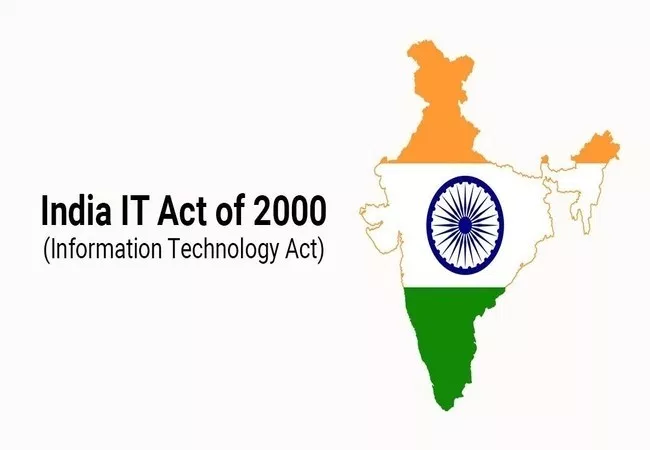
CYBER LAW
“Cyber Crime” defined as any offences where computer network or electronic communications, including any communication device or the Internet or both or more of them are involved and “Cyber law” defined as the legal matters that are related to electronic devices or the cyberspace. It is a great tool to integrate the challenges imposed by perpetrators on the internet with implementation of laws enforce to the physical world. In new era of Internet and computer, cyber laws assume a very vital role. It is significant as it is worried to practically all parts of actions and recreations that occur either on computer or the cyber space. Though we know about it or not, yet each activity and every response in Cyberspace has some lawful and Cyber lawful perspectives. Interestingly, Cyber Crime is not defined in Indian legislation, even in Information technology act or in amended IT Act. IPC (Indian Penal Code, 1860) and some other legislation has been already dealt with every crime. Although, the Information technology Act define all necessary terms of cyber crime such as- a computer, computer network, data, information etc.Source: Wikipedia
Indian IT Act, 2000
An Act to provide legal recognition for transactions carried out by means of electronic data interchange and other means of electronic communication, commonly referred to as ―electronic commerce, which involve the use of alternatives to paper-based methods of communication and storage of information, to facilitate electronic filing of documents with the Government agencies and further to amend the Indian Penal Code, the Indian Evidence Act, 1872, the Banker’s Books Evidence Act, 1891 and the Reserve Bank of India Act, 1934 and for matters connected therewith or incidental thereto.Source: IndiaCode
An Act to provide legal recognition for transactions carried out by means of electronic data interchange and other means of electronic communication, commonly referred to as ―electronic commerce, which involve the use of alternatives to paper-based methods of communication and storage of information, to facilitate electronic filing of documents with the Government agencies and further to amend the Indian Penal Code, the Indian Evidence Act, 1872, the Banker’s Books Evidence Act, 1891 and the Reserve Bank of India Act, 1934 and for matters connected therewith or incidental thereto.Source: IndiaCode
Indian IT Act (Amendment), 2008
An Act to provide legal recognition for the transactions carried our by means of electronic data interchange and other means of electronic communication, commonly referred to as "Electronic Commerce", which involve the use of alternatives to paper based methods of communication and storage of information , to facilitate electronic filings of documents with the Government agencies and further to amend the Indian Penal Code, Indian Evidence Act, 1872,, The Bankers' Books Evidence Act, 1891, and the Reserve Bank of India Act, 1934 and for matters connected therewith or incidental thereto.Source: Police PY
An Act to provide legal recognition for the transactions carried our by means of electronic data interchange and other means of electronic communication, commonly referred to as "Electronic Commerce", which involve the use of alternatives to paper based methods of communication and storage of information , to facilitate electronic filings of documents with the Government agencies and further to amend the Indian Penal Code, Indian Evidence Act, 1872,, The Bankers' Books Evidence Act, 1891, and the Reserve Bank of India Act, 1934 and for matters connected therewith or incidental thereto.Source: Police PY
Indian Evidence Act, 1872
The Indian Evidence Act, originally passed in India by the Imperial Legislative Council in 1872, during the British Raj, contains a set of rules and allied issues governing admissibility of evidence in the Indian courts of law. The enactment and adoption of the Indian Evidence Act was a path-breaking judicial measure introduced in India, which changed the entire system of concepts pertaining to admissibility of evidences in the Indian courts of law. Until then, the rules of evidences were based on the traditional legal systems of different social groups and communities of India and were different for different people depending on caste, community, faith and social position. The Indian Evidence Act introduced a standard set of law applicable to all Indians.Source: Wikipedia
The Indian Evidence Act, originally passed in India by the Imperial Legislative Council in 1872, during the British Raj, contains a set of rules and allied issues governing admissibility of evidence in the Indian courts of law. The enactment and adoption of the Indian Evidence Act was a path-breaking judicial measure introduced in India, which changed the entire system of concepts pertaining to admissibility of evidences in the Indian courts of law. Until then, the rules of evidences were based on the traditional legal systems of different social groups and communities of India and were different for different people depending on caste, community, faith and social position. The Indian Evidence Act introduced a standard set of law applicable to all Indians.Source: Wikipedia
Indian Penal Code, 1860
The objective of this Act is to provide a general penal code for India. Though not the initial objective, the Act does not repeal the penal laws which were in force at the time of coming into force in India. This was done because the Code does not contain all the offences and it was possible that some offences might have still been left out of the Code, which were not intended to be exempted from penal consequences. Though this Code consolidates the whole of the law on the subject and is exhaustive on the matters in respect of which it declares the law, many more penal statutes governing various offences have been created in addition to the code. The Indian Penal Code of 1860, sub-divided into 23 chapters, comprises 511 sections. The Code starts with an introduction, provides explanations and exceptions used in it, and covers a wide range of offences.Source: Wikipedia
The objective of this Act is to provide a general penal code for India. Though not the initial objective, the Act does not repeal the penal laws which were in force at the time of coming into force in India. This was done because the Code does not contain all the offences and it was possible that some offences might have still been left out of the Code, which were not intended to be exempted from penal consequences. Though this Code consolidates the whole of the law on the subject and is exhaustive on the matters in respect of which it declares the law, many more penal statutes governing various offences have been created in addition to the code. The Indian Penal Code of 1860, sub-divided into 23 chapters, comprises 511 sections. The Code starts with an introduction, provides explanations and exceptions used in it, and covers a wide range of offences.Source: Wikipedia
Reserve Bank of India Act, 1934
Reserve Bank of India Act, 1934 is the legislative act under the Reserve Bank of India was formed. This act along with the Companies Act, which was amended in 1936, were meant to provide a framework for the supervision of banking firms in India. The Act contains the definition of the so-called scheduled banks, as they are mentioned in the 2nd Schedule of the Act. These are banks which were to have paid up capital and reserves above 5 lakh. There are various section in the RBI Act but the most controversial and confusing section is Section 7. Although this section has been used only once by the central govt, it puts a restriction on the autonomy of the RBI. Section 7 states that central government can legislate the functioning of the RBI through the RBI board, and the RBI is not an autonomous body.Source: Wikipedia
Reserve Bank of India Act, 1934 is the legislative act under the Reserve Bank of India was formed. This act along with the Companies Act, which was amended in 1936, were meant to provide a framework for the supervision of banking firms in India. The Act contains the definition of the so-called scheduled banks, as they are mentioned in the 2nd Schedule of the Act. These are banks which were to have paid up capital and reserves above 5 lakh. There are various section in the RBI Act but the most controversial and confusing section is Section 7. Although this section has been used only once by the central govt, it puts a restriction on the autonomy of the RBI. Section 7 states that central government can legislate the functioning of the RBI through the RBI board, and the RBI is not an autonomous body.Source: Wikipedia
The Bankers' Book Evidence Act, 1891
The Banker’s Book Evidence Act came into effect from 1891. When a judge may order a party to inspect and take copies of entries in banker’s books. The judge may also order the bank to produce certified copies of the entries accompanied by a further certificate that no other entries in the books of the bank are relevant to the matter of such proceedings. Such order shall be served on the bank three clear days exclusive of bank holidays before the same is to be obeyed unless otherwise directed by the court.Source: trotal.com
The Banker’s Book Evidence Act came into effect from 1891. When a judge may order a party to inspect and take copies of entries in banker’s books. The judge may also order the bank to produce certified copies of the entries accompanied by a further certificate that no other entries in the books of the bank are relevant to the matter of such proceedings. Such order shall be served on the bank three clear days exclusive of bank holidays before the same is to be obeyed unless otherwise directed by the court.Source: trotal.com






